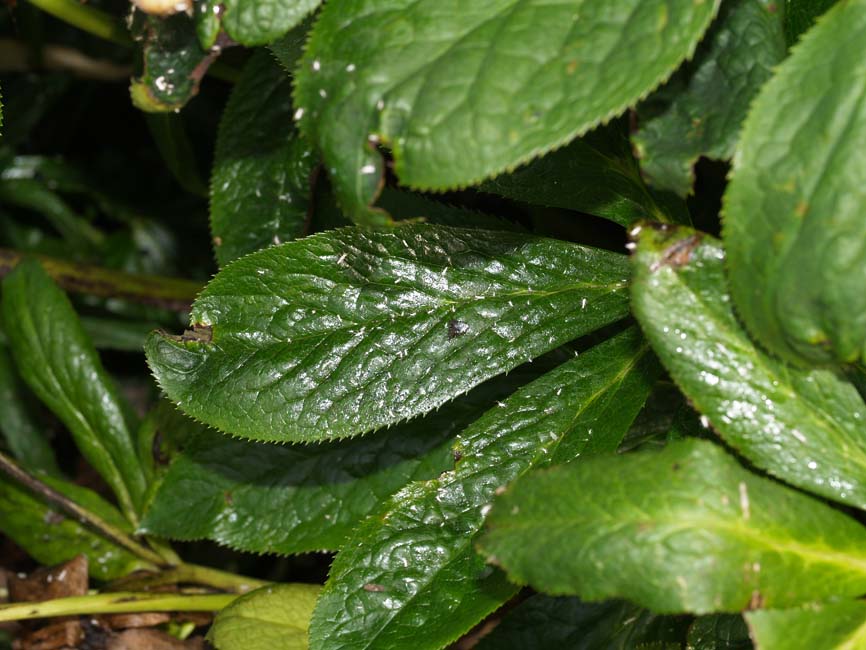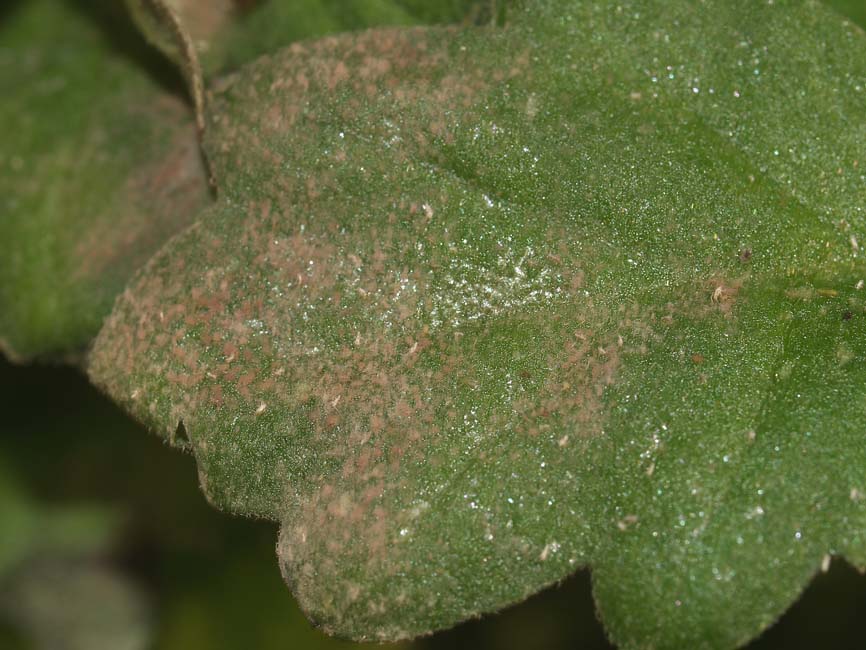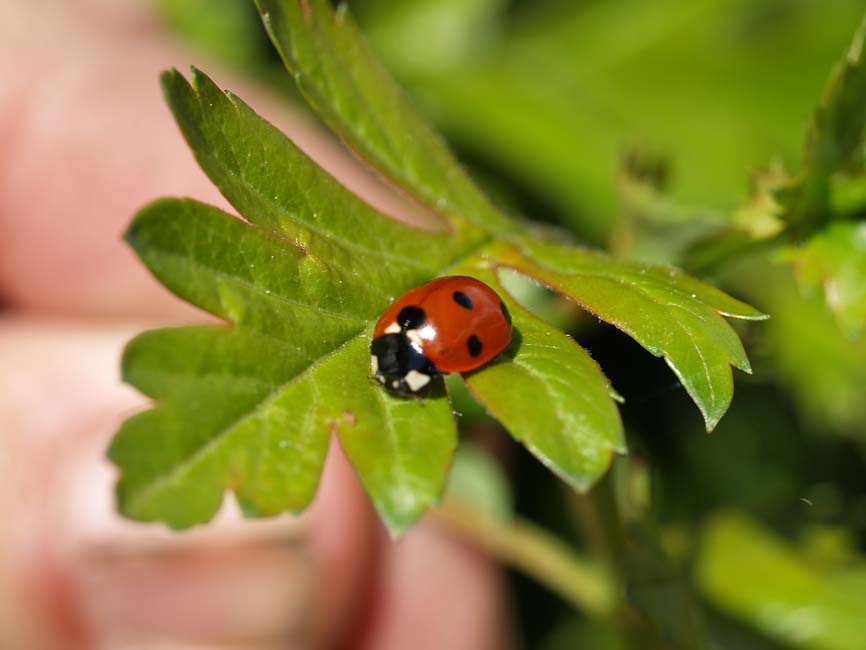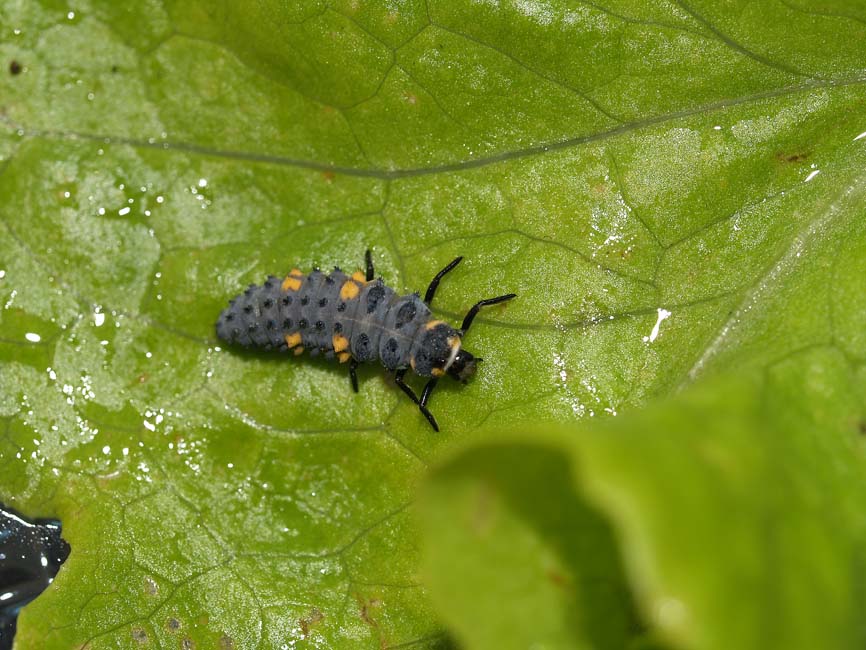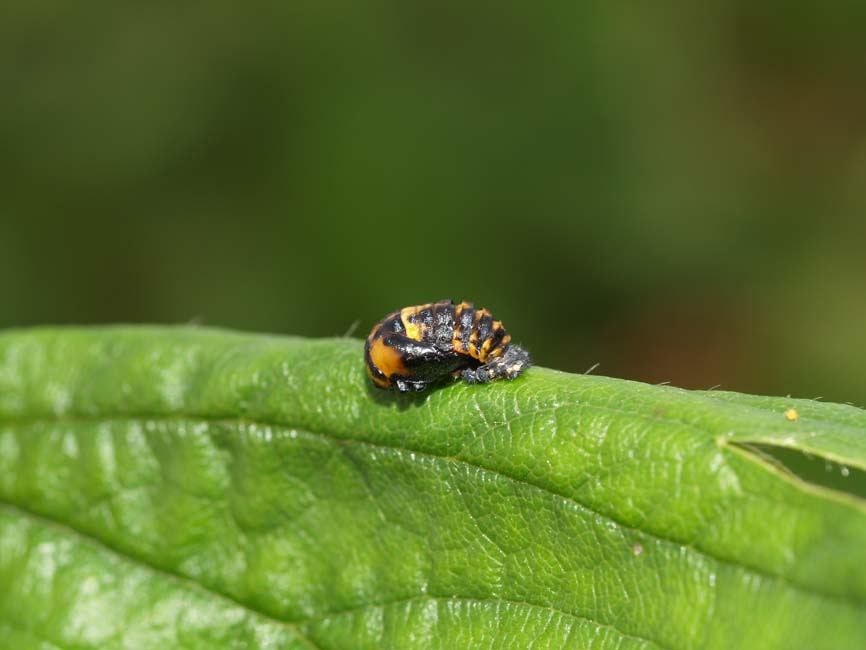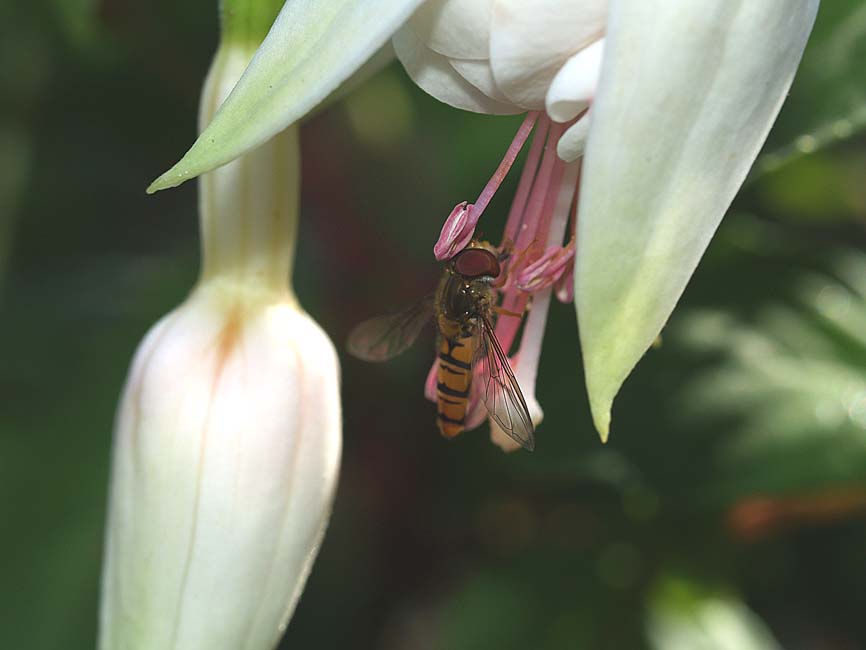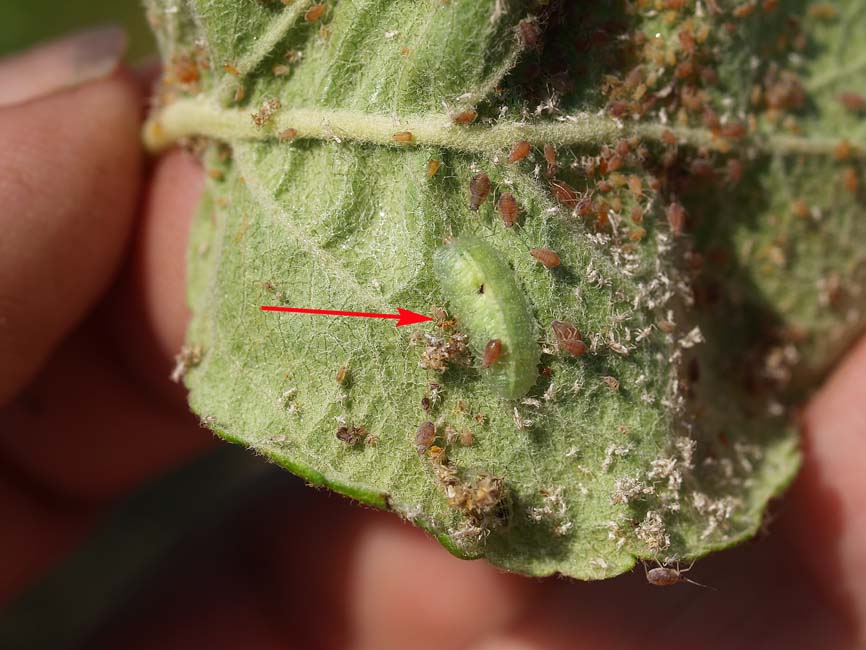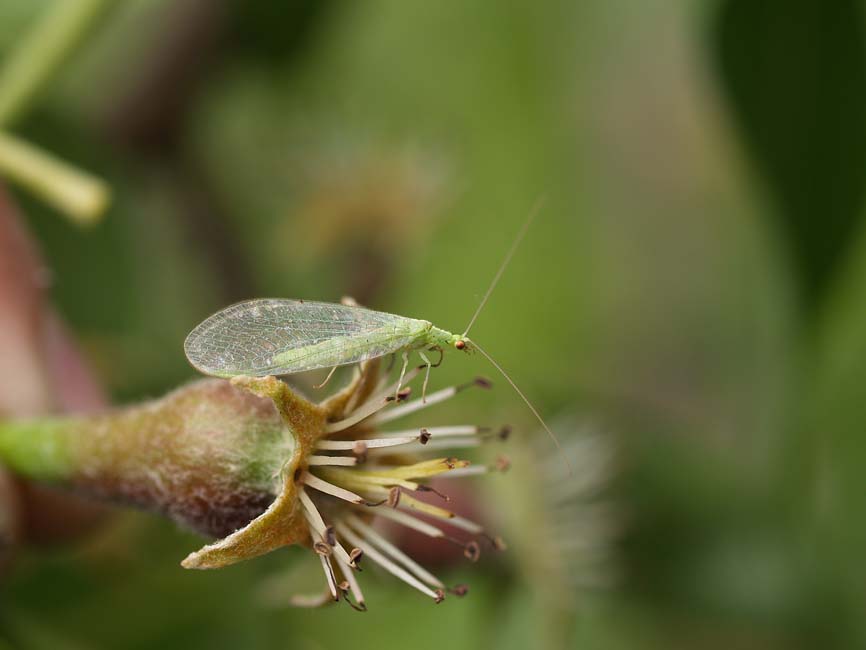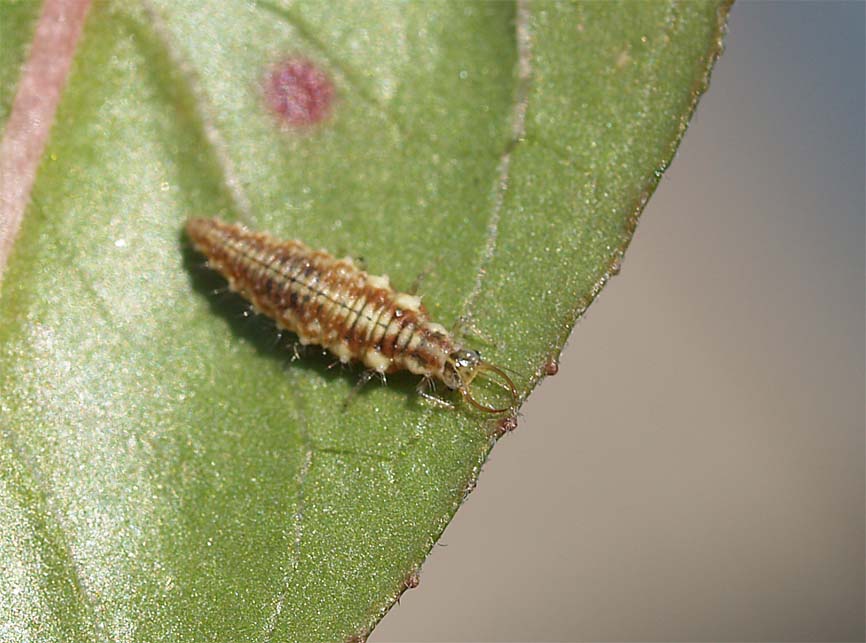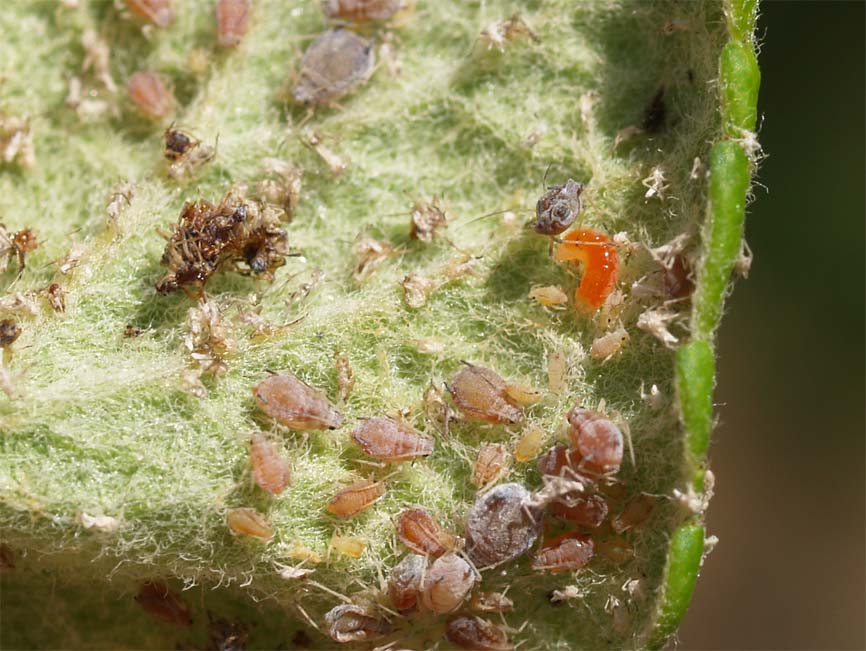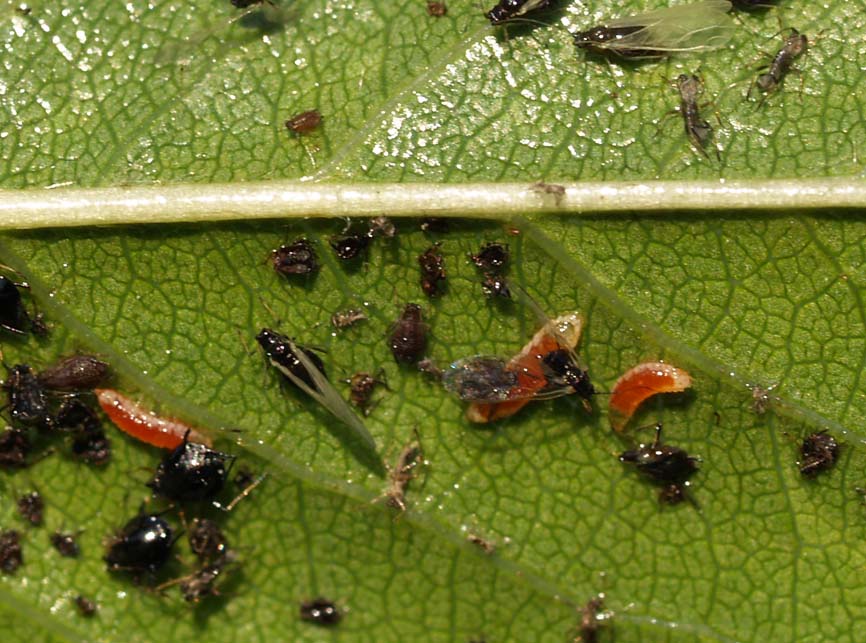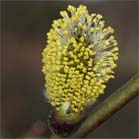 |
 |
 |
Pest's
 New !
New !
Aphids (Aphididae)Link to more aphids
Aphids in general
Peach aphid, green on capsicum.
Photo: Magnus Gammelgaard, Danish Institute of Agricultural Sciences Aphids are one of the most common pests that we have to del with, when doing the hobby of growing plants. The first symptoms you see are often a sticky shining covering on the leave surface, called "honey dew". These are the sugar like droppings from the aphids.
Left: Leaves from Helleborus (Christmas Rose) covered
with "honeydew". Right: The sugar deposits are the perfect nutrient for
different kinds of non plant pathogenic fungi, called sooty moulds.
Photo: Magnus Gammelgaard. These sugar deposits are exudated from the aphids, as their most important needs is the proteins. Often you will see different kinds of black fungi, growing in the sugar deposits and giving the leaves surface anaesthetic looks. At heavy attack the growth of those fungi, will reduce the photosynthesis, but not damage the leaves. The direct injuries from the aphids are curled and abnormal leaves and shots, which will develop as a result of the sucking. Aphids are "birth machines". If they are at that stage of their development, where the conditions are optimal for eating and breathing, they are giving birth to young ones without any pre going mating ("virgin-birth"). There is no time for such nonsense! It is importent quickly to rice the population. When the concentration of aphids on the leaves are too large, the females will starting to give birth to nymphs with wings, so that they can leave the crowded places. Especially in outdoor conditions, there are a lot of different species, which varying from each other, depending on the chose of host, lifecycle and where to feed on the plant. Both roots, stem, stalks, leaves, flowers and fruits can be infected by different species. Often it is necessary for a specific species to have more than one host to complete the whole lifecycle. Inside on houseplants, the Peach aphid is very common, while outdoor there are quite a lot of different species, Cabbage aphids, Pea aphids, Potato aphid, elder aphids, cherry aphids, apple aphids (red and green) rose aphids and you could go on…………. Often the aphids are very specific to only one host, as an example. Rose aphids will only be able to feed on roses. 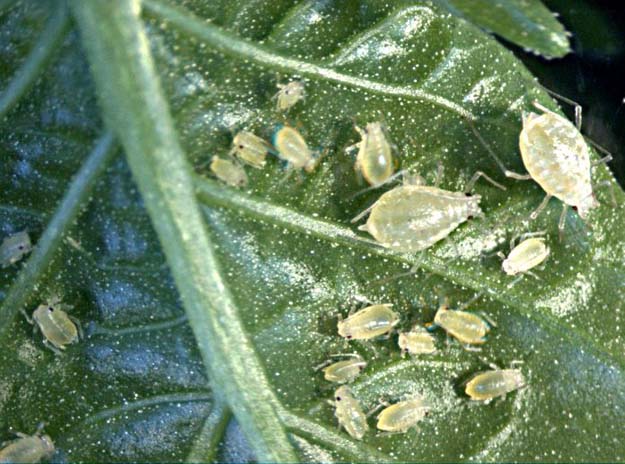
Peach aphid, green (Myzus persicae) on
capsicum.
Photo: Magnus Gammelgaard 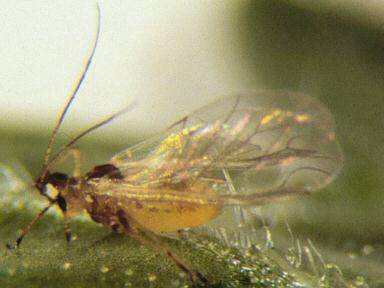 Peach aphid with wings, are ready to fly to another host. Photo: University of Florida Aphids have many natural enemies. Different species of parasitoids, lacewings, ladybirds, syrphids, bugs, gall midges, birds and a lot of insect pathogenic fungi.
Ladybirds are to be recognized by most people. Both
adults and larvae do have aphids on their menu. Her you can se imago,
eggs, larvae and pupae of the seven spotted ladybird. (Coccinella
septempunctata).
Photo: Magnus Gammelgaard. More pictures at www.plantesygdomme.dk/nyttedyr.htm
The hoverfly ore more specific, the larvae, are
consuming a lot of aphids during the season.
Photo: Magnus Gammelgaard. More pictures at www.plantesygdomme.dk/nyttedyr.htm > Pupa (puparium) of syrphid on the surface of an apple leaf (puparium). Photo: Magnus Gammelgaard.
The lacewings (larvae) are often effective in
controlling aphids.
Foto: Magnus Gammelgaard. More pictures at www.plantesygdomme.dk/nyttedyr.htm  The eggs of lacewings are mounted on the leaves by a tiny stalk. This keeps them out of reached from "egg robbers" Photo: Magnus Gammelgaard 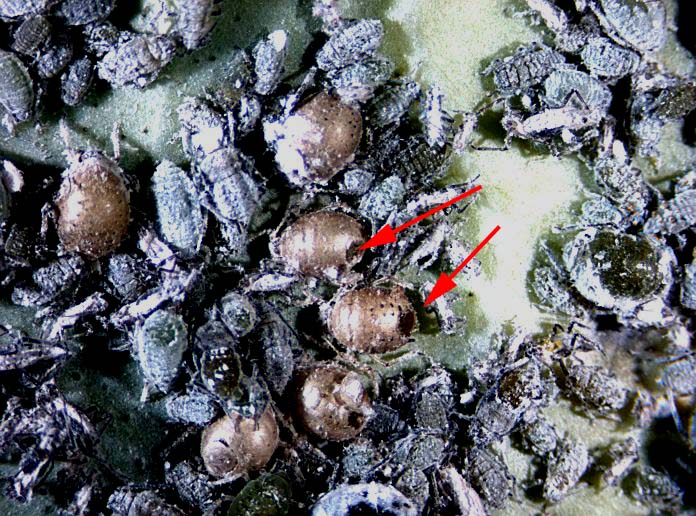 Cabbage aphids (Brevicoryne brassicae)has been parasited. A parasitoid has injected its egg in to a living aphid. The egg will hatch and the larvae of the parasitoid will eat the aphid from the inside. In state of an aphid there will bee a new parasitoid. Left is only the mumificided body of the aphid and the hole where the parasiotoid has left the body.
Predaceous midges are very common in the summertime.
The tiny little midges are laying their eggs near the aphid colonies.
The eggs hatch and the larvae are sucking out the aphids.
Right: the rosy apple aphid (Dysaphis plantaginea). Left the cherry aphid (Myzus carasi) . Foto: Magnus Gammelgaard. More pictures on www.plantesygdomme.dk/nyttedyr.htm Often it is not
necessary to do anything. !
A garden with many different kinds of plants, perennials, flowers, trees, and herbs gives food and protection to a lot of beneficials. So if you got "Ice in the stomach" and are waiting with any kinds of plant protection, the problems will often salves it self. Read the article on: naturen.htm Especially late in the season the benificials can be quite large in numbers, at they will totally eradicate all the aphids. If you observe the ladybirds, syrphids and parasitoids attacking an aphid colony, often you will se that the ants will do everything they can, to protect the aphids. The ants are keeping the aphids as "milking cows", which are supplying them with honeydew. On certain plants the aphis can be very annoying. If you got small plants, newly planted the totally can stop the growth. The cherry aphids for example, especially on sweet cherries are very harmful if you looking at the growth of the new shoots. Syrphids are often mistaken to be wasps. But it is easy to see the differences! Syrphids are able to fly like a helicopter, nearly standing still in the air and flies in starts. Syrphids are laying their eggs close to aphid colonies. The larvae of the syrphids is one of the most important natural enemies in outdoors conditions. Late in the summer you can find the adults in grate numbers. At the adress: http://www.uni-kiel.de/phytomed/schadtiere/video/video_de.html you can see a litte clip with the larvae of the syrphid, cathing and sucking an aphid. At the same place :http://www.uni-kiel.de/phytomed/schadtiere/video/gallery.html you can see a large number of pictures illustrating different species of aphids and their natural ennimies. Bekæmpelse
1) The product consist of natural pyrethrin and a so called synergist which intensify the effect. Precaution: Repeted
spraying with cold water will inhibit the development of the aphids.
Spaying with milk is an advice which can be done on outside conditions. Spraying i sunshine and warm weather will result that the milk get souer. The aphids do not like that Inside it dos´nt smell very nice.
|

